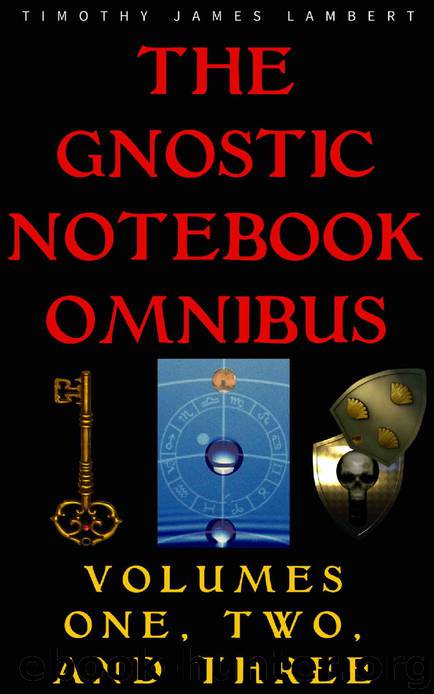The Gnostic Notebook Omnibus: Volumes One, Two, and Three by Timothy James Lambert

Author:Timothy James Lambert [Lambert, Timothy James]
Language: eng
Format: epub
Tags: Gnosticismo
Publisher: UNKNOWN
Published: 2018-11-17T06:00:00+00:00
Figure 1. My version of Dali's Crucifixion (Corpus Hypercubus).
So there you go. I had to take a few liberties with the image, as I was never going to get an exact copy with my 3d software and my limited skills. The most disappointing aspect was the area under Jesus’ right arm. I was unable to capture the illusion of depth that Dali achieved in the original. The most significant intentional alteration was the replacing of Dali’s wife Gala with Ayn Rand. While researching the painting, I discovered that Rand had spent hours gazing upon it at the Metropolitan Museum of Art. That really struck me as ironic. Here is this woman, an outspoken atheist, practically worshiping an image of Jesus. She claimed that Dali’s image of Christ on the hypercross symbolized, for her, John Galt’s defiance towards his torturers.
Rand was anti-Christian only in the sense that she rejected his humanitarian message, feeding the poor, healing the ill. Instead, she was taken with his heroic death upon the cross. Dali, on the other hand, saw the painting as symbolizing the coexistence of two apparently incompatible worldviews: those of science and religion. I see it somewhat differently. I’d say that the painting symbolizes Christianity paired with, not science, but speculative geometry. These two forces have been working in unison since their creation by Plato around 360 B.C.
Plato is said to have laid the foundations of Western philosophy, science and mathematics while also being one of the founders of Western religion and spirituality. Friedrich Nietzsche called Christianity "Platonism for the people." So perhaps, coming back to Dali’s Crucifixion (Corpus Hypercubus), it would be more accurate to label the two realms evoked within the painting as Western philosophy, science, and mathematics corresponding to the hypercube and Western religion and spirituality corresponding to the body of Christ. And perhaps we are the spectator, who sees these as two distinct objects, yet with a slight crossing of our eyes, they become merged into a single entity.
Our focus is currently on the hypercube, with the hypercube symbolizing not the entirety of Western philosophy, science and mathematics, but instead simply speculative geometry, which is my own term. In the next book we will examine what is signified by the body of Christ, but for now, we will confine our explorations to Plato’s connections to the hypercube.
The most obvious entry point into the works of Plato is his Allegory of the Cave.
Download
This site does not store any files on its server. We only index and link to content provided by other sites. Please contact the content providers to delete copyright contents if any and email us, we'll remove relevant links or contents immediately.
Signature in the Cell: DNA and the Evidence for Intelligent Design by Stephen C. Meyer(3075)
The Secret Power of Speaking God's Word by Joyce Meyer(2983)
Real Sex by Lauren F. Winner(2968)
The Holy Spirit by Billy Graham(2894)
The Gnostic Gospels by Pagels Elaine(2473)
Jesus by Paul Johnson(2312)
Devil, The by Almond Philip C(2283)
23:27 by H. L. Roberts(2198)
The Nativity by Geza Vermes(2181)
Chosen by God by R. C. Sproul(2123)
All Things New by John Eldredge(2106)
Angels of God: The Bible, the Church and the Heavenly Hosts by Mike Aquilina(1932)
The Return of the Gods by Erich von Daniken(1898)
Angels by Billy Graham(1889)
Knowing God by J.I. Packer(1807)
Jesus of Nazareth by Joseph Ratzinger(1769)
Evidence of the Afterlife by Jeffrey Long(1746)
The Gnostic Gospel of St. Thomas by Tau Malachi(1739)
How To Be Born Again by Billy Graham(1732)
